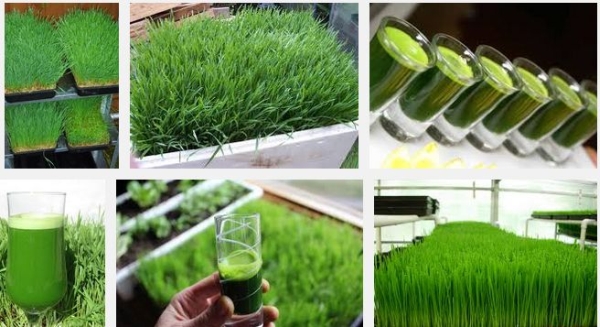Wheatgrass, the young grass of the wheat plant that is sprouted from wheat grains, is fast becoming popular in the Philippines because of its many health benefits and curative properties. It is considered as a superfood and a wonder medicine that can cure or prevent various health problems.
Wheatgrass is comparable to even the most nutritious vegetables, providing significant amounts of protein, B12, vitamin E, enzymes, amino acids and chlorophyll as well as a number of other vitamins and minerals. It is believed to help detoxify the body, fight infection and improve digestion. Try it as a hangover cure. By acting as an appetite suppressant, wheatgrass can also promote weight loss. It has been associated with a lower risk of cancer and the reduction of tumors. Wheatgrass also promotes healthy skin and is a possible remedy for baldness and gray hair. Additionally, it also contributes to muscle building and increased endurance. Not only that, but wheatgrass may have a beneficial effect on circulation and blood sugar.

Wheatgrass can be grown outdoors, but it is also commonly grown inside where it can be readily harvested and prepared. By growing your own, you can easily avoid the chemicals found in most produce. Wheatgrass is easy to grow and will provide you with nutrition in just a few days after sowing. This short production period is not something you tend to find in most vegetables, making wheatgrass a very cheap and efficient form of nutrition.
How to Grow Your Own Wheatgrass
Here are the things you need to get started growing wheatgrass:
* Quality wheatgrains
* A large, flat, rectangular or square plastic trays with holes on the bottom. If they don’t have holes, make some.
* A bag of potting soil. This should preferably be organic soil without chemicals added. You don’t need fertilizers to grow wheatgrass since it grows in such a short time.
* A sprinkler sprayer
* Scissors
* A jar for soaking the seeds
* A colander for the initial sprouting of the seeds
Procedure:
It is best to sprout the seeds in advance so that you do not end up with ungerminated seeds that can develop mold.
1. Start out by soaking your seeds in some water until they sprout. This will usually take about a day. You can add about 5% hydrogen peroxide to the water to help germination and reduce mold.
2. Prepare your growing tray with dampened soil. You can mix in some compost or manure if you want to increase the nutrient content of the soil.
3. Place the sprouted seeds closely together in your tray so that you’ll end up with a nice thick lawn of wheat grass.
4. Cover the sprouts with about 1/8″ of soil and cover the container with clear plastic. Once the blades of grass begin poking up through the 1/8″ layer, you can remove the plastic. Be sure to provide good sunlight.
5. When the blades reach about 7-8″ in height, the grass is ready to harvest. This will usually take about a week.
6. Leave about an inch of grass above the soil to remain growing. Once cut, the grass will resume growing, and it can be harvested again. You can help rejuvenate the soil with an organic liquid fertilizer or by making compost tea.
7. Fresh blades can be stored in an airtight container in the fridge for up to 3 days. Juiced blades is best consumed within the day after juicing.
Steps in Juicing Wheatgrass
1. Wash the wheatgrass thoroughly.
2. Extract the wheatgrass juice by using an electric juicer or a manual juicer.
3. For best results, wheatgrass juice should be consumed within 30 minutes after juicing. It will keep for about 12 hours in the refrigerator.
4. juice may also be frozen as ice cubes, freezing preserves the enzymes. Shelf life of frozen juice is about one (1) week.
Other pointers:
1. Do not rinse the grass if it will be stored in the refrigerator as water will hasten its decomposition
2. Cut grass can be stored for up to seven days, in glass or plastic container with lids, in the refrigerator. Do not use yellow-tinged grass.
3. For best results, grass should be juiced and used immediately.
Sources: wikipedia.org, agribusinessweek.com, egh.com.ph, growgrass.blogspot.com

it is avalable in Dubai,pls contact in this number for fresh wheat grass and powder 055 /5356684
where can i buy wheatgrass seeds? is it alright to take wheatgrass although i have high uric acid count?